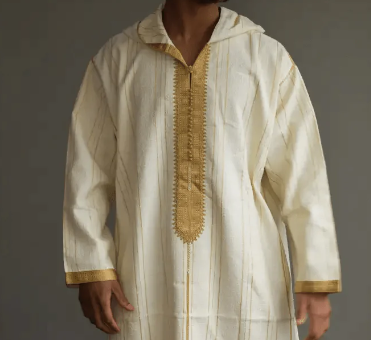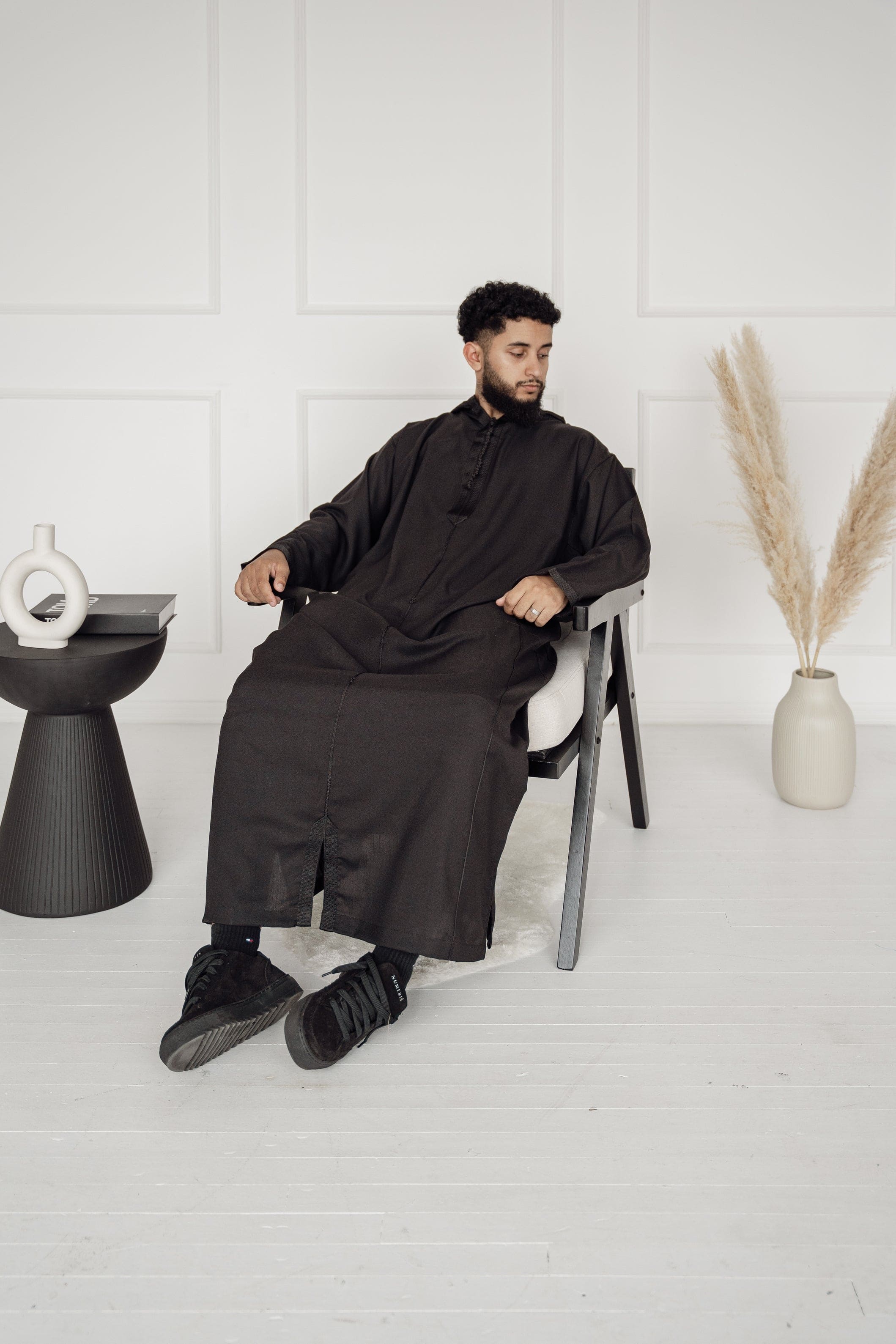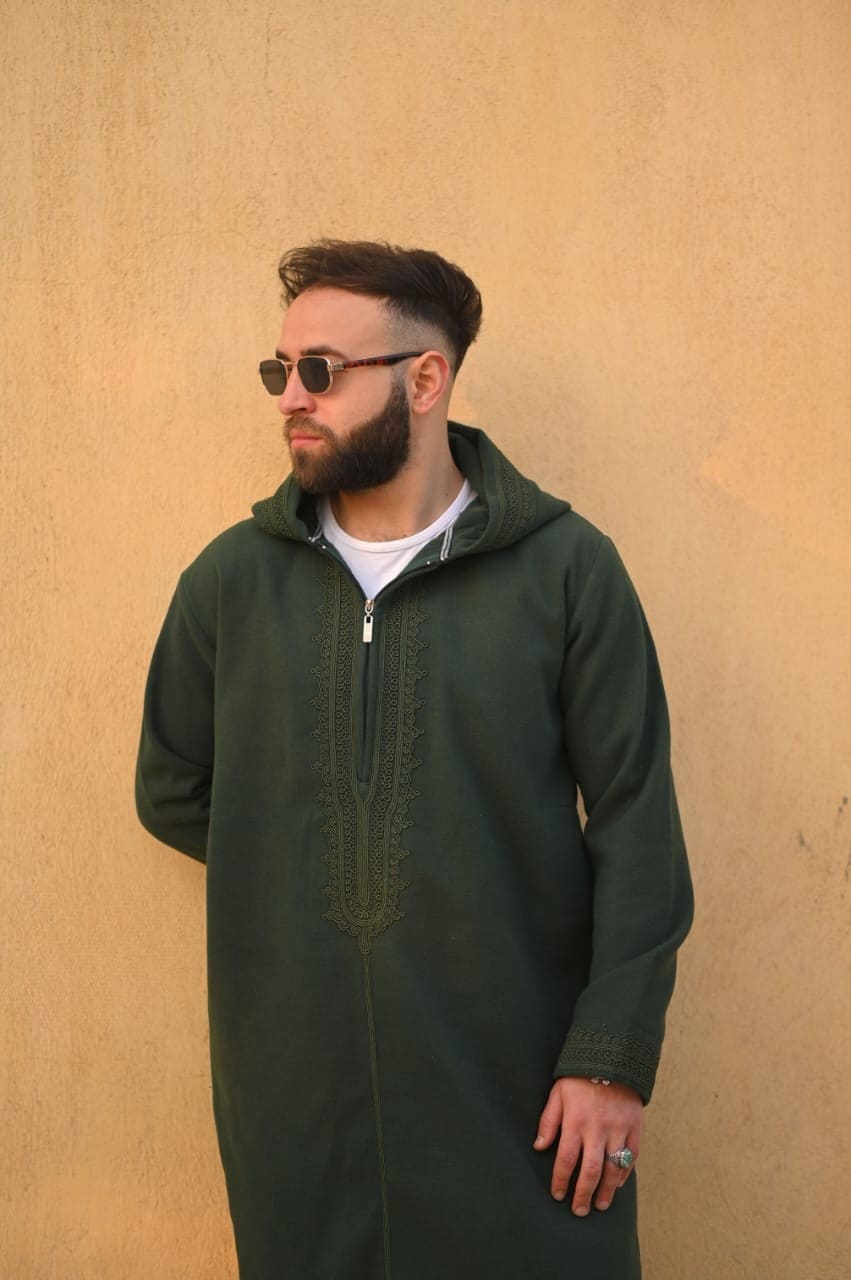In the realm of fashion, cultural diversity serves as an endless source of inspiration. Delving into the vibrant markets of Arab and Morocco, you'll witness two distinguishable attire gaining immense prominence - the djellaba vs abaya.
For this purpose, it is paramount to explore the origins, designs, cultural importance, and distinctive fashion choices associated with these garments. By seamlessly blending Moroccan heritage with elegance and native tradition, these iconic outfits embody a captivating fusion of style, comfort, and historical significance.
The Djellaba: A Cloak of Marrakech Heritage
The Djellaba is a traditional attire that resembles a robe and is extensively donned in Morocco and various regions of North Africa. This extraordinary garment has been deeply rooted in Moroccan culture for countless generations.
The origins of the djellabas date back to the Berber tribes of North Africa. The nomadic tribes created this adaptable attire as a shield against the unfriendly and harsh weather conditions. As years passed, it transformed into a representation of their heritage and cultural heritage.
Distinctive Features of Jellabas
The following are some of the distinctive features that set jellabas from other robe-like garments:
One of the most recognizable features of this traditional outfit is its hood, which protects from both the sun and cold winds. This practical addition is an essential part of its incredible design.
They are often adorned with intricate embroidery, showcasing a rich tapestry of Moroccan artistry. These designs can vary from region to region, adding a touch of uniqueness to each outfit.
These are typically made from heavier fabrics, such as wool or cotton, making them an ideal choice for the cooler Marrakech climate. However, lightweight versions are also available for the warmer months.
The Abaya: Elegance in Simplicity
While knowing the differences between djellaba vs abaya, both of these traditional outfits share similarities, speaking for their distinct charm that has garnered attention worldwide.
The Abaya has its roots in the Arabian Peninsula, where it first emerged as a symbol of modesty and tradition, serving the purpose of fully covering a woman's body. However, as time passed, it transformed into a fashion trend that women from various backgrounds have enthusiastically adopted.
Remarkable Features of Abaya
Modify your closet with the modest addition of abayas having the following characteristics:
Abayas are known for their graceful simplicity. They are typically long, flowing robes that drape elegantly, allowing for easy movement and comfort.
Contemporary abayas come in a wide range of styles, from traditional black to vibrant colours and patterns. Some are adorned with subtle embellishments, offering a touch of sophistication.
They hold immense cultural and religious significance, as they represent modesty and respect for tradition in Islamic culture.
Djellaba vs Abaya: A Style Showdown
Now that the individualised features of both the garments have been explained, it is vital to highlight the differences between djellaba vs abaya so you can easily judge which type of dress should be worn concerning its suitability with the occasion.
When it comes to choosing between the djellaba vs abaya, personal style and cultural context often play a significant role. In Morocco, gallabea remains a staple for both men and women. At the same time, the abaya is predominantly worn by women, symbolising modesty in Islamic countries.
The jillaba symbolises Moroccan heritage and reflects the country's diverse culture. In contrast, the abaya serves as a symbol of modesty and religious devotion in many Islamic societies because this religion visualises women as precious pearls that must be protected at all costs, by all means.
The choice of heavier fabric with the addition of a hood is better suited for Morocco's cooler climate. However, the lightweight and roomy feel of the abayas offers ample comfort in hotter climates.
Final Wrap UpThe djellaba vs abaya are modest attires and go beyond being mere fashion items. The splendid collection of New Arabia offers a diversified array of modest wear from the regions of the Middle East and North Africa, including thobes UK. They embody a vibrant blend of culture, history, and individuality in the realm of style. While the gallabea exudes Marrakech heritage and craftsmanship, abayas stand as a representation of modesty and tradition. Both men and women wear the former, while the latter is specifically designed for women to conceal themselves physically. Both garments, in their unique ways, offer a glimpse into the diverse and fascinating world of fashion while maintaining utmost modesty by all means.



